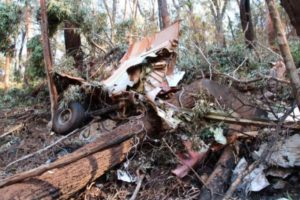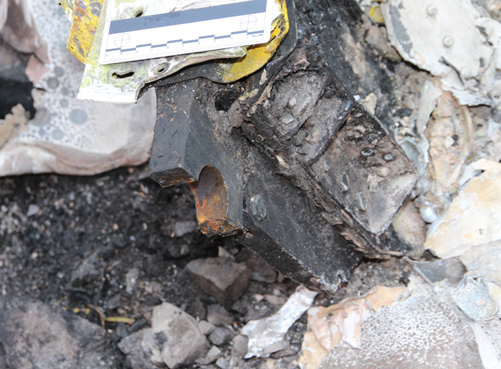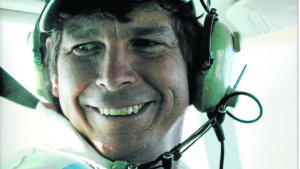Fatigue Cracks Blamed for Wing Detachment that Killed Firefighter
Given the grave consequences of metal fatigue failures in the aviation industry, laser peening plays a vital role in safeguarding the lives of pilots, passengers, and crew.
Posted: June 20, 2017
By:

An aviation tragedy
Experienced pilot and father of three David Black was killed when his M18 Dromader crashed while waterbombing a bushfire in New South Wales in October 2013. The Australian pilot was carrying a load of fire retardant to combat blazes along the country’s southeast coast when the left wing detached from his aircraft and sent the plane into an uncontrollable descent.
After an investigation by the Australian Transport Safety Bureau (ATSB) and an inquest by the Coroner’s Court of New South Wales, the cause of the tragic accident has been ascribed to corrosion pitting in the metal lugs that attached the wing to the fuselage.
From the coroner’s report: “Inspection of the separated pieces of the lug revealed that fatigue cracks had formed in the lug at locations corresponding to the location of the corrosion pitting. Fatigue cracks form when a metal is subject to repeated varying stresses. Each time a tensile stress is applied the crack grows larger on a microscopic scale. When the crack reaches a critical size the remaining material is unable to withstand the applied stress and the remaining material rapidly fractures.”
The dangers of metal fatigue
Fatigue cracking is a perpetual safety concern in the aviation industry, where critical component failure endangers aircraft of all sizes. Metal fatigue commonly occurs in areas of repeated loading and high stress concentration, making parts like wing attachments, landing gear, or turbine engine blades particularly susceptible to failure.

To combat metal fatigue cracking, aerospace manufacturers routinely apply powerful surface enhancement techniques like laser peening to strengthen critical components. Laser peening generates deep compressive residual stresses that inhibit crack propagation and improve material resistance to corrosion.
In addition to preventative material enhancement, critical parts are also subject to rigorous inspection protocols throughout the life of the aircraft. Proper inspections are essential for detecting cracks, corrosion, and other dangerous defects.
Unfortunately, in the case of the crashed M18 Dromader, prior inspections of the aircraft failed to detect the corrosion pitting and fatigue cracks in the wing lug, and investigators determined that those inspections were inadequate and not properly performed. According to Deputy State Coroner Magistrate Derek Lee, the method used to detect corrosion and cracking within wing attachment fittings was, “unauthorized and did not comply with the mandatory requirements of the Civil Aviation Safety Authority.”
This tragedy highlights the consequences of human error and procedural oversight in the aircraft maintenance cycle. The agency inspecting Mr. Black’s plane used an unapproved process to evaluate wing attachments, and the wings were not removed during safety inspection, a step which would have revealed the dangerous metal fatigue.

The coroner recommended several procedural changes to the M18 Dromader inspection process, including mandatory wing removal and revisions to the way agencies calculate aircraft service time. Aviation tragedies often bring about new safety regulations and procedures, but the needed reforms come with a heavy toll for accident victims and their families. David Black was a well-respected professional pilot performing a vital public service as an aerial firefighter. He leaves behind a wife and three children, along with many grieving colleagues in his hometown of Trangie, Australia.
The importance of metal enhancement
Given the grave consequences of metal fatigue failures in the aviation industry, laser peening plays a vital role in safeguarding the lives of pilots, passengers, and crew. Laser peening is regularly applied to flight-safety-critical aircraft parts across a wide variety of aircraft, including wing attachment lugs. There is a strong probability that you or a loved one has flown in a plane with laser peened components, and the technology has become crucial for aircraft safety, maintenance, and sustainment.
The fatigue enhancement benefits of laser peening are so significant they can extend the inspection intervals necessary to detect material flaws in critical parts. This has been a function of laser peening from its initial application on the F101 engine in 1999, to more recent implementation by the nuclear power industry.
Eliminating inspection requirements reduces the risk of human errors or inadequate procedures from contributing to an unsafe aircraft. Laser peening can even be applied around existing cracks in fielded parts, extending the component service lifetime beyond its original as-manufactured rating.
For these reasons and more, LSP Technologies is proud of the role we play in preventing fatigue failures for our aerospace and power generation customers – a role that helps to prevent tragedies like the 2013 crash that took the life of David Black. We’ll never stop working to make your world a safer place.
Contact LSPT for more information about laser peening.
Interested in Seeing More?
Tell us about your application, material, or failure mechanism and we will have one of our experts reach out to you. Our extensive library of research and years of experience gives us a unique advantage to apply a finite element analysis to help diagnose the best application for your situation.
